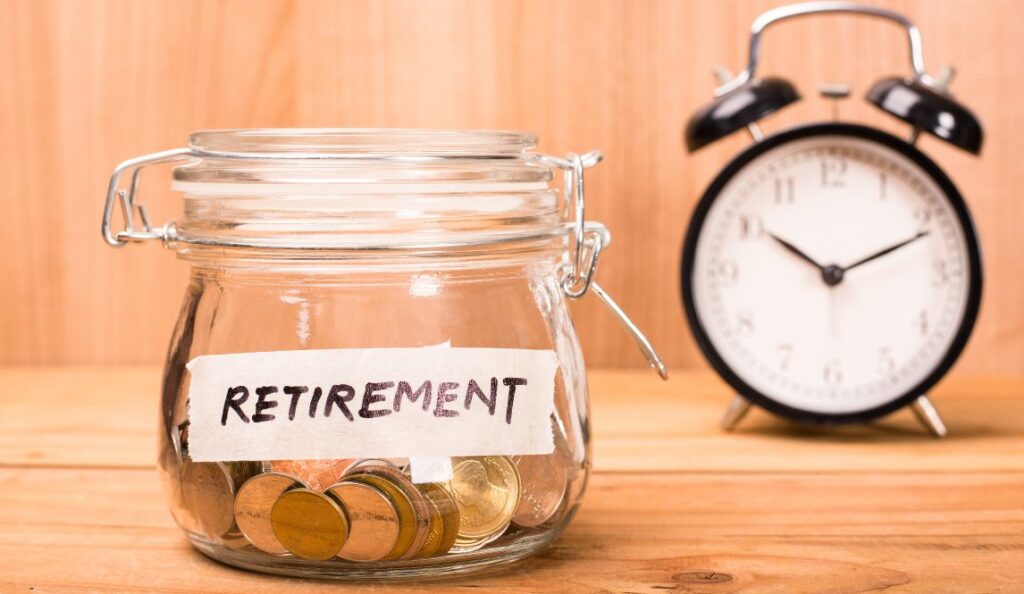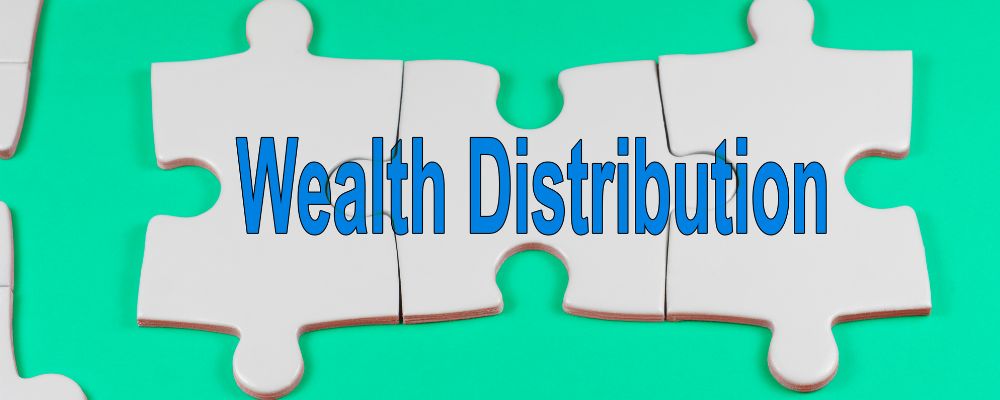|
Check out our new audio content!
Getting your Trinity Audio player ready...
|
By Rick Tobin
There are relatively few people who truly feel wealthy and don’t worry about their monthly income covering their rising monthly expenses almost daily or weekly. It’s much more important how much you save and invest each month rather than spending 100% of your net income on household expenses.
Comparing one’s wealth with friends and family can be quite depressing for many because you’re more likely to know someone much wealthier than you. It’s much more healing for you to focus on what you do have in life and who loves you by way of gratitude. This is because good health and happiness are the greatest forms of wealth in this world.
“Comparison is the thief of joy.”
– President Theodore Roosevelt
article continues after advertisement

Let’s take a closer look below at how you may compare with the rest of the world as per the World Bank:
- Approximately 8% of the world’s population lived in extreme poverty back in 2019, which means that they subsisted on just $2.15 (U.S.) per day.
- The World Bank listed worldwide poverty numbers within two daily income thresholds as lower-middle-income countries (LMICs) at $3.65 (U.S.) and upper-middle-income countries (UMICs) at $6.85 (U.S.) per day.
- Approximately 23% of the world’s population lived below the UMIC daily income range of $3.65 in daily income.
- Another 47% of people worldwide lived below the $6.85 poverty line, as shared in a World Bank report entitled Poverty and Shared Prosperity 2022.
- The median worldwide income of $7.60 per person per day is very close to the upper-middle-income countries (UMICs) line.
- 70% of the world’s population lived in middle-income economies, where the international poverty line might be too low to define someone as poor.
Daily Median Income Doubled (2001 to 2017)

For most Americans, the median worldwide income of $7.60 per day (or $2,774/year) for the 2019 year probably is much lower than what the typical American earns. Yet, the years preceding 2019 had much lower annual income estimates for the years between 2001 and 2017 as shared below:
- The daily income per person was closer to $3 back in 2001.
- Sixteen years later in 2017, the daily income doubled to $6.50.
- Almost 85% of the world’s population lived on just $30 per day ($10,950/year) in 2017.
- An estimated 65% of people lived on $10 per day ($3,650/year).
- Approximately 10% lived on less than $1.90 per day ($693.50/year).
Source: Daily Median Income for World by Crews Bank
article continues after advertisement

Will You Outlive Your Money?
Unless you’re close friends with billionaires, the odds are quite high that a high percentage of your friends and family created the bulk of their overall net worth from investing in real estate over several years or decades. Your friend might’ve first purchased their home on their own with 100% financing or it was passed down to them from their parents or grandparents over one or two generations.
One of our greatest fears is that we may run out of savings or not have sufficient amounts of monthly income to cover our expenses. For most people here in the U.S. and across the world, they have probably run out of money at some point in their lives whether they were young teenagers or older retirees.
Running out of money during one’s retirement years is truly one of the scariest situations for an increasing number of older Americans. As shared by the Pew Research Center and Forbes, the fastest-growing demographic for U.S. workers entering (not exiting) the workforce in 2024 were people over the age of 75 because their Social Security and pension (if available) income was not sufficient enough to cover their rising monthly expenses.

A recent study completed by Visual Capitalist found that there was $123 trillion dollars’ worth of cash, savings, time deposits, and money market funds in 2024 that’s described as the Global M2 Money Supply. If the $123 trillion in cash or cash-like instruments were shared equally as savings for the estimated eight billion people living today, it would amount to $15,000 for every person on the planet.
If you earn $3 per day in income while only spending $2 per day, you’re net ahead each day. However, if you earn $15,000 per month and spend $16,000 per month, you’re struggling and likely to eventually run out of cash savings.
The Top 10 Most Challenging Retirement States

Listed below is a detailed analysis created by GOBanking Rates and shared by CNBC that shows how quickly $1 million dollars’ worth of retirement savings plus Social Security income can be depleted anywhere between 12 and 27 years for the Top 10 most expensive states.
However, this report completely excluded federal and state income taxes from this analysis (California’s highest state income tax rate is 13.3% and Hawaii’s is 11%), so it’s more likely that residents will spend their money at a faster pace due to taxes and future rising inflation rates.
Here are the 10 states where $1 million runs out the fastest in retirement:
1. Hawaii
Monthly expenses: $2,761
Annual cost after Social Security: $80,125
Years $1 million lasts: 12
2. California
Monthly expenses: $2,269
Annual cost after Social Security: $61,406
Years $1 million lasts: 16
3. Massachusetts
Monthly expenses: $2,340
Annual cost after Social Security: $51,686
Years $1 million lasts: 19
4. Washington
Monthly expenses: $2,096
Annual cost after Social Security: $45,629
Years $1 million lasts: 22
5. New Jersey
Monthly expenses: $2,001
Annual cost after Social Security: $41,315
Years $1 million lasts: 24
6. Colorado
Monthly expenses: $1,899
Annual cost after Social Security: $39,759
Years $1 million lasts: 25
7. New Hampshire
Monthly expenses: $2,081
Annual cost after Social Security: $38,052
Years $1 million lasts: 26
8. Utah
Monthly expenses: $1,876
Annual cost after Social Security: $37,060
Years $1 million lasts: 26
9. Oregon
Monthly expenses: $2,017
Annual cost after Social Security: $37,346
Years $1 million lasts: 27
10. Rhode Island
Monthly expenses: $2,113
Annual cost after Social Security: $36,920
Years $1 million lasts: 27
By contrast, $1 million in retirement savings plus Social Security should last at least 30 years in 36 other states, as per this same GOBankingRates report.
Source: The 10 states where $1 million runs out the fastest in retirement—it’s just 12 years in Hawaii
Inflation: Weakens Dollar, Boosts Real Estate

You’re likely to run out of cash if the bulk of your investments are held as cash, ironically. How is this seemingly contradictory statement true or not?
Every single year, the dollars in your pocket get weaker and weaker due to inflation. For example, it’s been claimed that $1 in 1913 when the Federal Reserve was formed is now worth closer to 2 or 3 cents today after 112 years’ worth of inflation continually weakening our dollar.
I’ve described real estate as an exceptional hedge against inflation for several decades. This is because home values tend to rise at least as high as the published historical inflation rates. Yet, this description does not give real estate enough credit for how much higher homes have appreciated as compared with inflation.
For example, U.S. home prices between 1950 and 2024, when adjusted for inflation, more than doubled the annual published rate of inflation in every single state in America, according to Brilliant Maps. From a low of a 107% home value gain as compared to inflation in Ohio to a high of a 675% home gain in Alaska, the investment returns for property owners were quite impressive.
The creation of multiple income streams, whether it be from one, two, three, or four jobs or part-time gigs, rental properties, discounted mortgage or note investments, stocks, bonds, or insurance investments, or other sources, is what you should invest your time and energy on each day or week. The future version of you will later thank you for starting your investing strategies sooner rather than later.
If you earn $5 per day or $5,000 per day, you should focus on your daily expenses as well. Are you still earning more than you spend each day? If not, then please focus on ways to generate one or more additional income streams that may likely originate from real estate one way or another.
Should you be holding a coffee in your hand priced near the daily median worldwide income average of $7.60 and have a roof over your head while reading this article, you’re doing OK and should be grateful as compared with the rest of the world.

Rick Tobin
Rick Tobin has worked in the real estate, financial, investment, and writing fields for the past 30+ years. He’s held eight (8) different real estate, securities, and mortgage brokerage licenses to date and is a graduate of the University of Southern California. He provides creative residential and commercial mortgage solutions for clients across the nation. He’s also written college textbooks and real estate licensing courses in most states for the two largest real estate publishers in the nation; the oldest real estate school in California; and the first online real estate school in California. Please visit his website at Realloans.com for financing options and his new investment group at So-Cal Real Estate Investors for more details.
Learn live and in real-time with Realty411. Be sure to register for our next virtual and in-person events. For all the details, please visit Realty411.com or our Eventbrite landing page, CLICK HERE.
Views: 135


















